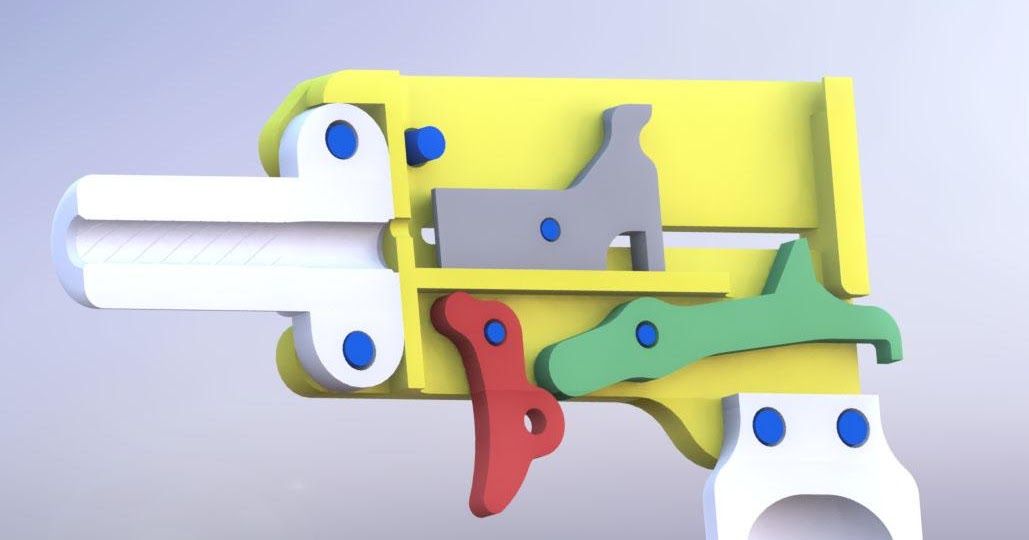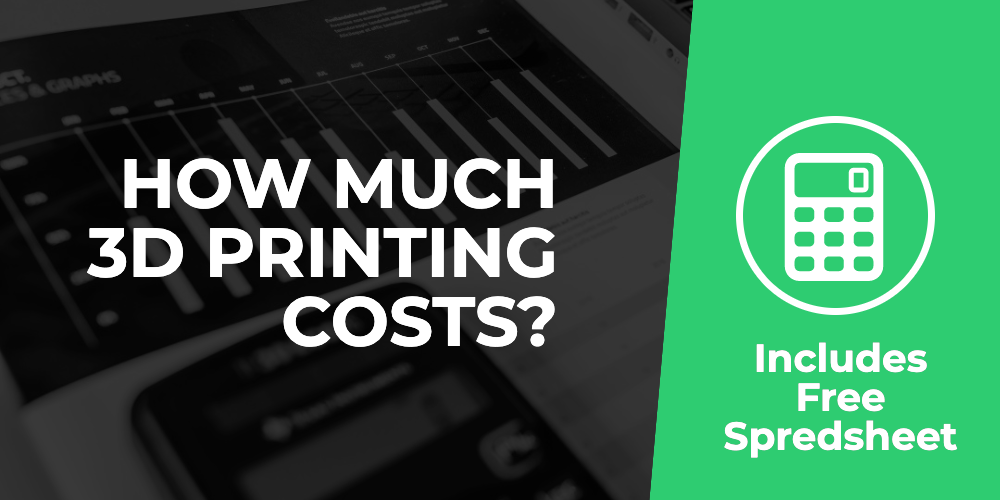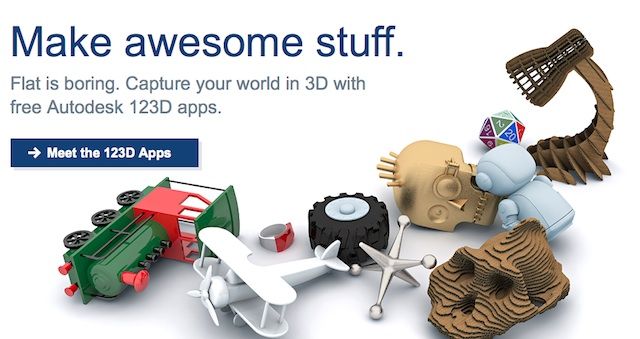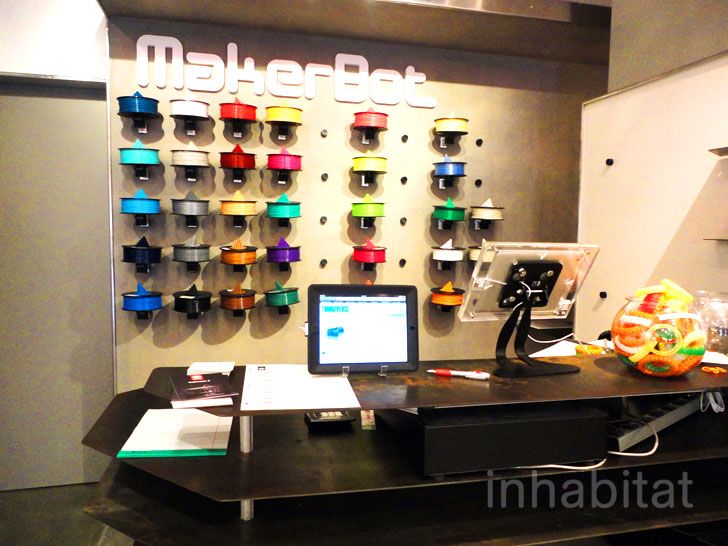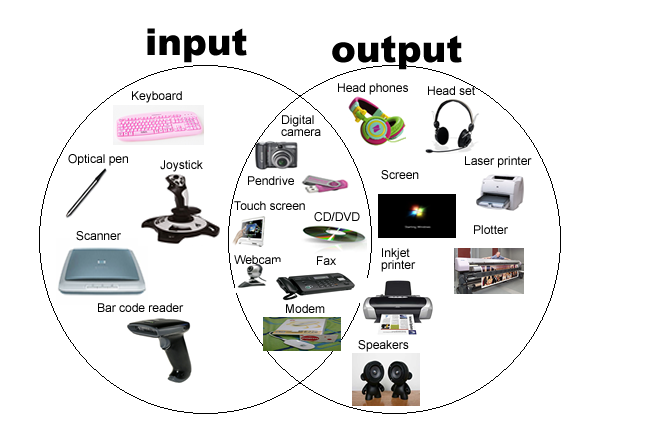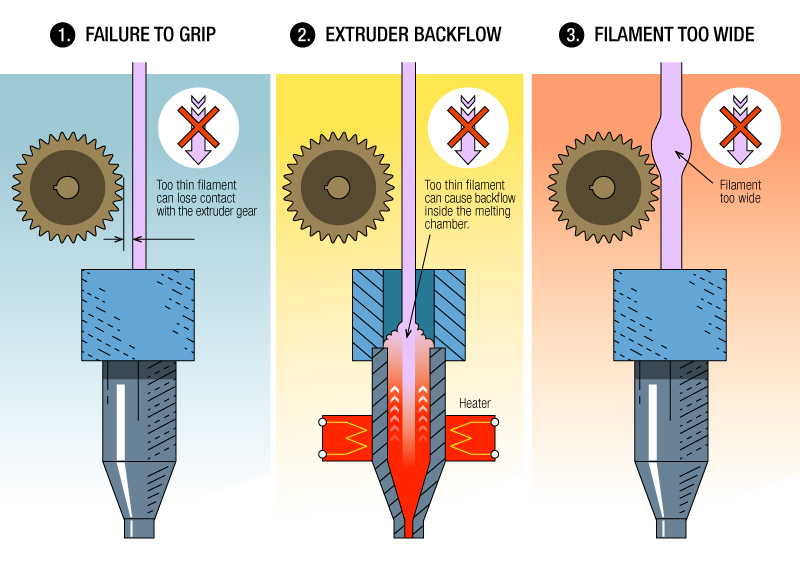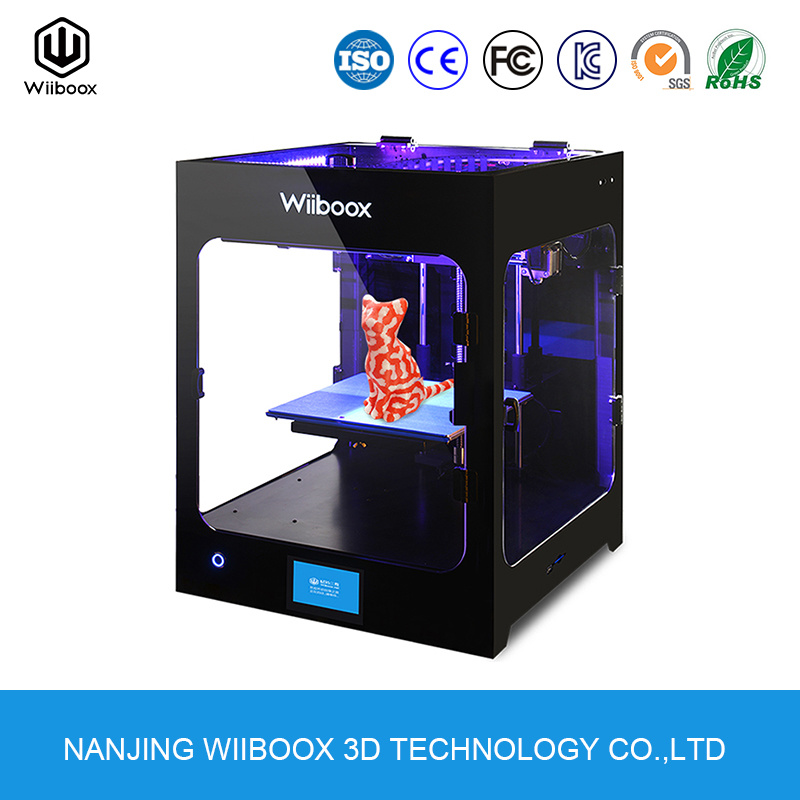How to make a gun 3d printer
How to Make 3D Printed Gun Parts - Step by Step Guide
ADVERTISEMENT
Table of Contents
Isn’t 3D printing an exciting technology, with so much power to bring almost any design to life. However, a lot of critics feel that such revolutionary inventions should be limited to those who could take proper responsibility for using it for the right cause.
One such 3D file that divided everyone into two perspectives was the 3d printed gun parts. Since the time the design first surfaced, it has always been in talks.
Some believe that such easy access to 3D design for creating a weapon that cannot be traced easily or could pass through metal detectors is completely dangerous.
After the first operational gun got its fame in 2013, a lot of other designers have come up with their own styles and designs. However, it’s still isn’t very acceptable.
Many countries have refined their laws against and in for of 3D printed guns. So far, after making the 3D gun parts designs legal to upload online in the USA, many activists and government organizations are fighting to put this down.
A lot is already happening and we do not know what the future entails. However, as of now, you can find pretty amazing 3d printed gun blueprints on the internet and online repositories.
Some of them are even free to download. So, let us know a bit more about the history of the 3D printed gun parts and how legit it is to print one at home.
ADVERTISEMENT
A Peep into the History of 3D Printed Gun Parts
Cody Wilson designed the first 3D printed gun parts in 2013 and since then, the trend is only surging. Cody is the founder of the Texas open-source gunsmith organization Defense Distributed.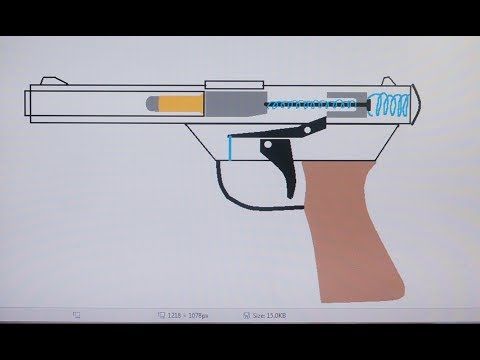
He is an experienced crypto-anarchist. The guy released the first 3D files for the one-shot pistol. Soon, the 3D file created a huge spark within the 3D printing community, bringing the most unprecedented controversy to date. And, it is still ongoing.
In only two days, the 3D file had 100,000 downloads. Right after which the US Department of State insisted Defense Distributed to turn down the model from the internet. This further turned into a legal battle that the techno-anarchist is still facing by the government forces.
Later, a variety of 3D printed guns were released, however, in the form of a pistol. On the other hand, Defense Distributed developed 3D printable parts that were designed for semi-automatic weapons. Hence, these were confiscated by the police.
With the increase in the surge of popularity of the 3D printed gun parts’ blueprints, available through the internet, these firearms have become available to anyone, irrespective of age, mental condition or any other criteria.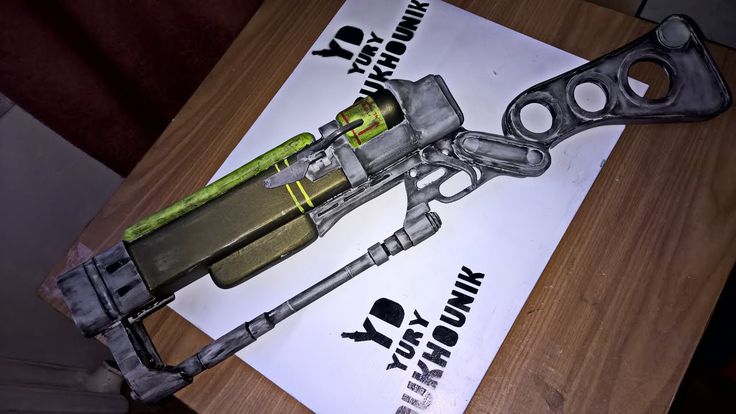
These could be accessed by police as well as criminals alike, without any code of legality. This certainly makes the problem much bigger than we can think of.
Hence, it was not very long that the government of different countries started imposing the laws to stop the circulation of 3D printed gun parts and even the 3D files for the same so openly, through the web.
Either its Australia or Japan or even the USA, the government of every country is trying their best to find a solution to curb the issues that are obvious with allowing sharing of 3D files for 3D printed gun parts yet not affecting the freedom of expression.
There are repositories that freely feature the 3D designs for these guns which could be downloaded for free.
But it won’t be easy to find these online forums so easily because of the surging legalities and laws concerning 3D printed gun accessories and parts. 3D printed gun blueprints do pose a hidden threat that we are yet to uncover.
ADVERTISEMENT
3D Printer Making a Gun with Thermoplastic
The firearms were available before as well, but not completely designed out of thermoplastic material. These were usually assembled with few components made from a 3D printer.
These were usually assembled with few components made from a 3D printer.
However, Defense Distributed’s Liberator proved that the gun could be designed completely from a 3D printer. Apart from the metal firing pin along with the actual bullet, for sure, everything else was made of thermoplastic.
After the release of Liberator, Cody has been trying every bit to provide a push to his DIY firearms. It did not take much effort to make the 3D file viral though.
However, with the government’s decision to take off the file from the internet, it did provide his goals, a pullback. Following this, Defense Distributed came up with the Ghost Gunner. This is a desktop CNC milling machine that manufactures guns.
At the beginning of its release, the machine only produced the lower receiver component for an AR-15.
But as you would expect, Cody isn’t going to stop anywhere. He upgraded the software and now the Ghost Gunner is also capable of manufacturing the aluminum frame of an M1911 handgun.
Cody Wilson may feel that the increased accessibility of firearm production would help refine the gun rights, others have a different take on it.
The government and others from the 3D community are worried about the consequences of making the technology available to the wrong people.
ADVERTISEMENT
Risks Associated with 3D Printable Guns
After the 3D designs for firearms got popularity, the governments from different countries started assessing the risks associated with the same.
The first thing to note is that these weapons created by 3D printers don’t need any identification code such as the serial numbers.
These serial numbers are helpful in tracking down those owning these weapons, helping law enforcement regulate the use of such dangerous weapons. However, these cannot be traced.
And, you do not need to go through any background check before you 3D print it. Hence, you can just go ahead and manufacture a gun using a 3D printer.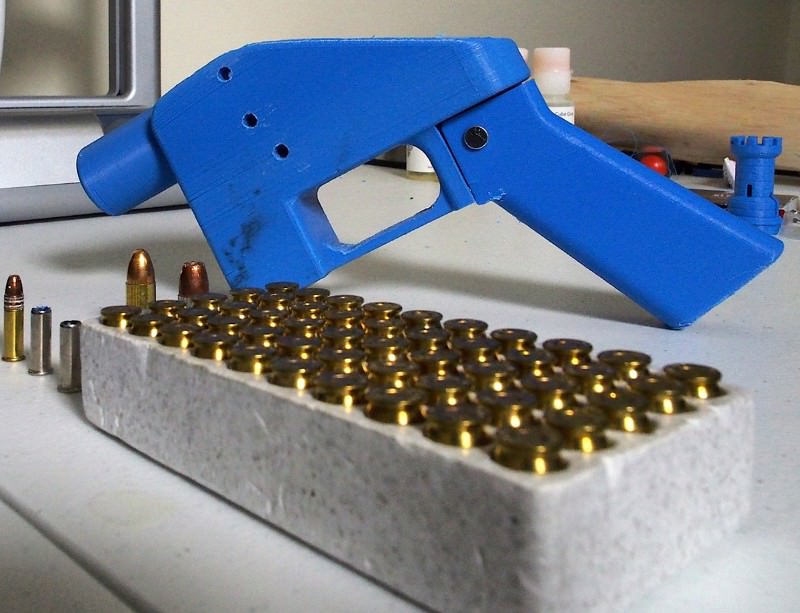 Hence, the probability of getting these weapons in the hands of criminals rises even more.
Hence, the probability of getting these weapons in the hands of criminals rises even more.
The question is, are these loopholes are only after the 3D files trended on the internet? The answer is no.
These loopholes existed since the start and people are engaged in creating guns illegally as well. However, 3D printing did widen that loopholes, providing even easier access to everyone.
Is it Legal to 3D Print Gun Parts?
Soon after realizing the threat hidden behind the freedom of circulating 3d printed gun blueprints, the government from the different parts of the world started acting.
The UK Home Office restricted the creation of 3D printed gun parts in Great Britain. It even made buying and selling of these parts and 3D printed gun accessories illegal. The law passed in 2013 in the UK.
Later in 2015, the Australian parliament of the state of New South Wales also came up with a similar law putting serious prohibition against 3D printed guns.
Naming the law as Firearms and Weapons Prohibition Legislation Amendment Bill 2015, the government penalized physical as well as digital possession of 3D printable guns.
In 2016, California did make a different move though. It did not completely ban the manufacturing of 3D printed guns. However, the law required those doing so, to apply for a serial number from the state Department of Justice.
Singapore has stricter laws around Asia. The possession of 3D printed guns is punishable by death.
China wasn’t behind when it came to regulating rules regarding circulation and 3D printing of guns. In 2017, it urged by passing a law to register with the government who wish to manufacture 3D printed guns.
The law that has attracted the attention of everyone from around the world is the one passed in August 2018. The law allowed Defense Distributed to publish 3D designs for firearms.
The US Department of State decided and waived the restraint order put against Cody Wilson in 2015. Therefore, now, those who are willing to 3D print a gun in the USA can easily access the digital file online.
ADVERTISEMENT
How to Create 3D Printed Gun Parts at Home?
There are two ways to go about it.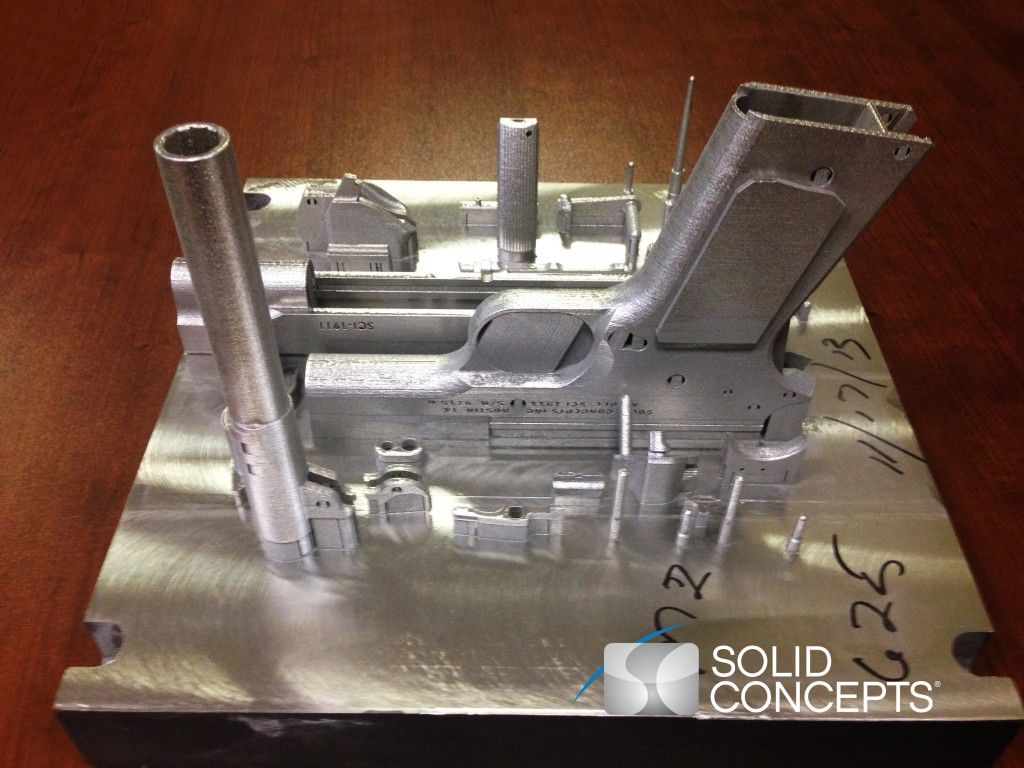 The first one is to do it all by yourself. Or, you can take help from those who have already driven that path before.
The first one is to do it all by yourself. Or, you can take help from those who have already driven that path before.
After the restrictions were taken off that was put against Cody Wilson, the internet flooded with 3D printed guns blueprints. You can find a lot of designs to start with. It is easily downloadable and can be edited as required.
Here is what you can do to create a 3D printed gun:
Step 1: If you wish to do it on your own, you would require to create a 3D file for the same. You can use the 3D design software to make that happen.
You can use the one you are used to working with. Do not forget to ensure that the parts are properly designed to fit together.
If you at all think that you are not good enough with 3D designs, why not take help from others.
There are many designs available online. You can download the one you like and make edits to the same. You can even keep the design as it is.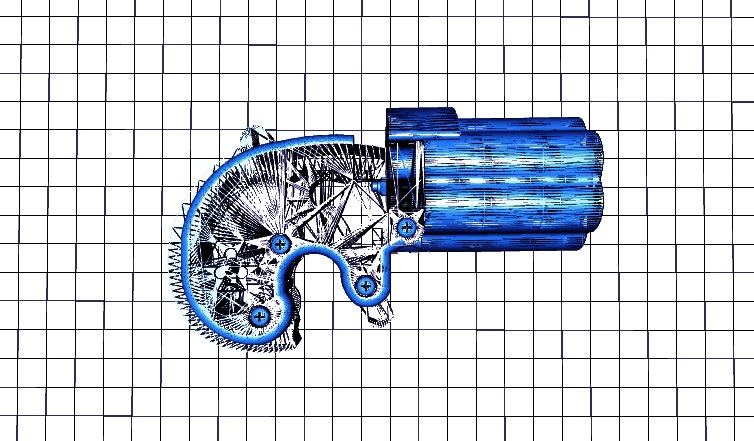
Step 2: Decide to print it with a 3D printer that can provide you the accuracy and right results.
You may not want to 3D print it using a budget 3D printer. Instead, you must do some research and look for the option that could help you create accurate designs.
Step 3: Slice your 3D design. Ensure to use the tips that came along with the downloaded 3D design.
From layer height to all other precise details, you must ensure every setting is in place.
Step 4: Feed the 3D file to the 3D printer and start watching the work happen. It will take some time but the results would be remarkable if your 3D file is correctly designed.
Step 5: Assemble the parts, if any.
Step 6: If you think that the parts aren’t compatible with each other. You may edit the 3D file with a flaw and start printing again for the parts that did not come in their best shape.
Do not forget to check the legalities concerning your country. You may not be allowed to do it. If that is the case, you must make the decision accordingly. Or else, you may have to face consequences that won’t be in your favor.
ADVERTISEMENT
The Conclusion
3D printing is a very progressive technology. And, as you would know, it could make many things possible that may seem difficult otherwise.
It could even help expedite the manufacturing process of those items that take longer to complete. All these benefits have always put 3D printing at the forefront.
The question is: Can we make sure that the technology is always used for the right cause. Or, can we make sure that the technology does not get into the hands of those who can bring the darker side of 3D printing to life?
All these questions have always bothered those who understand the limitless things that 3D Printing can accomplish.
There are always two sides to everything: the good and the bad. The greater the good, the worse the bad could be. For instance, 3D printed guns could do much worse than good.
The greater the good, the worse the bad could be. For instance, 3D printed guns could do much worse than good.
If not you, a lot of people have that notion and for the right reasons. That is why it would be difficult to finalize a verdict against the production of 3D printed guns.
Or, even when it comes to legalizing the commercialization of such weapons, government and law enforcement bodies may have to act together to find a solution.
If we have to point in one direction, it could be towards providing better laws that could possibly ensure that the technology is not used for illegal and wrong causes.
But is that completely possible. However, whatever the future would be, and whatever the laws would surface later, as of now, not every country is that strict.
And, if yours is letting you do that, you can experience how it would be like to create 3D printed gun parts at home using your own printer.
From Filament To Firearm: The 3D Printed Gun
For many, the idea of a 3D printed gun remains taboo and mysterious, but they’re still legal to build in the U. S. and are becoming a bastion for gun rights around the world.
S. and are becoming a bastion for gun rights around the world.3D printed guns are one of the last types of untraceable firearms that are easily accessible to the home builder. While totally legal if you’re not prohibited from possessing firearms, they remain a source of some controversy.
They’re also a fascinating subset of modern gun culture, using technology that was formerly restricted to industry manufacturing but is now available to the consumer. People are manufacturing their own firearms, in the comfort of their own homes, with drastically less tooling than ever before.
We’ll cover the basics of 3D printed guns in this article. What they are, how they’re made, their legal status (for the moment) and how to get started if you were curious about possibly making your own.
A 3D printed AR lower receiver. Photo: Wikipedia.What Is 3D Printing? What Was The First 3D Printed Gun?3D printing, also called “rapid prototyping” and “additive manufacturing,” is a way of quickly creating an object.
Imagine a miniature nozzle on a piping bag for decorating cakes. It makes a tiny drop of material, microscopic in size. Then it drops another one on top of it, and another and another. Eventually, a larger mass begins to take shape.
That’s a grossly simplified explanation, but that’s more or less how it works; tiny bits of material are put together and fused into an object. The operation is controlled by software (essentially computer-aided design or CAD) that takes all the dimensions and then builds an object from scratch.
An object being 3D printed. Photo: Wikipedia.To create these objects, 3D printers are supplied with feedstock made from various substances which are then melted into a state where they can be worked into their desired shape. The concept is similar to how a hot glue gun functions, only much more precise.
The 3D printers most common today (also the kind that are used to make 3D printed guns at home), typically use some sort of plastic filament as their feedstock.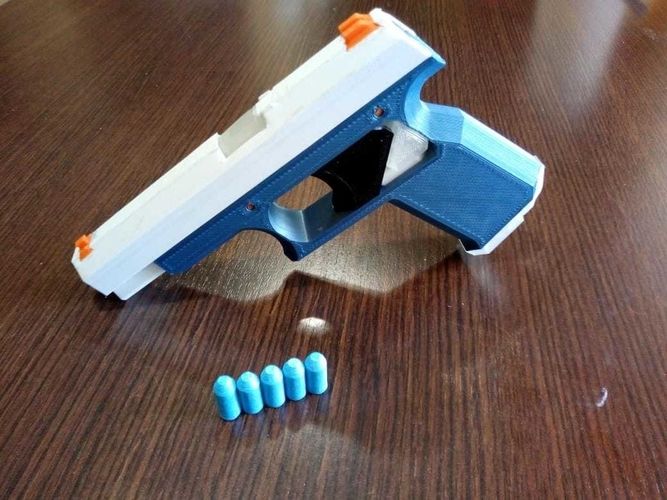 Industrial 3D printers can use certain metals as feedstock as well, and there are even versions of 3D printers that can use chocolate or plant-based materials in the food industry.
Industrial 3D printers can use certain metals as feedstock as well, and there are even versions of 3D printers that can use chocolate or plant-based materials in the food industry.
The first 3D printed guns, as far as anyone can tell, emerged around 2012 when Defense Distributed (and founder Cody Wilson) announced its plan to release the cut files for a plastic gun that anyone could make on a 3D printer.
The Defense Distributed Liberator Pistol. Photo: Wikipedia.The gun was their “Liberator” pistol, a wholly plastic single-shot .380 that is usually good for one, maybe two shots before being destroyed…but the concept proliferated from there. Now there are dozens of quality designs in existence, and more are being developed every day.
In fact, some people even compete with them, such as in the Gun Maker’s Match.
A scene from the Gun Maker's Match. Photo: Rob Pincus on YouTube.The Gun Control Act And Homemade FirearmsAs previously discussed in our article about ghost guns, the Gun Control Act of 1968 (nor the National Firearms Act of 1934) does not prohibit anyone from making their own firearm at home for personal use, so long as you aren’t already legally prohibited from possessing one.
While the federal government (and a number of state governments) is now requiring serialization and a background check for some partially complete receivers, that only applies to firearms that are manufactured for sale. As long as you’re manufacturing a firearm with the sole intention of personal use, it’s perfectly legal.
The parts used to build a Liberator Pistol. Photo: Wikipedia.The only legislation that has any real impact on 3D printed guns is the Undetectable Firearms Act of 1988, which merely requires any firearm—homemade or otherwise—to be detectable by a metal detector.
In short, it is—at the time of this writing—within the bounds of the law to 3D print your own gun if you’re not legally prohibited from owning a firearm in general.
Why Would You Want A 3D Printed Gun?
People get involved in the 3D-printed firearm community for different reasons.
Some individuals view filling out a 4473 as backdoor registration and don’t want to participate in the process if they don’t have to.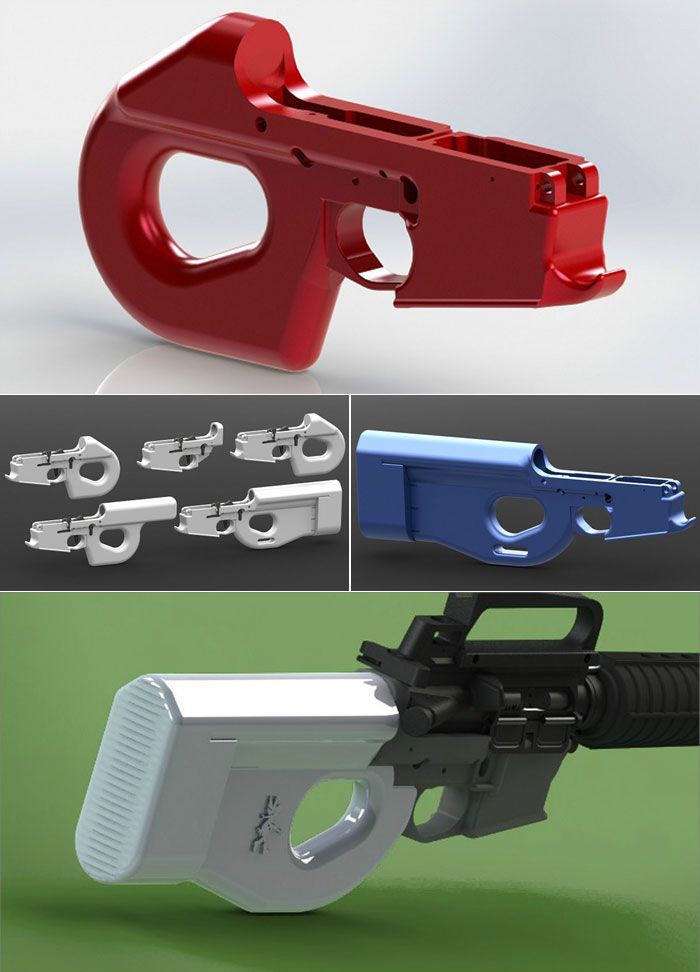
Others simply find the technology fascinating and want to see if they can make their own functioning firearm, create their own original design or even develop designs with their own unique features that aren’t available from any commercial firearms manufacturers.
A Tokarev built using a 3D printed frame. Photo: Wikipedia.People also use 3D printers to create their own unique firearms accessories, small unobtainable parts such as rare stripper clips and even just firearm receivers that can be used to complete parts kits. Everything from vz. 61 Skorpion to AK to G3 parts kits have been rendered functional with the use of a 3D printed receiver.
Have there been some used for criminal activity? Of course, though quite rarely. Then again, so have factory firearms, and all the laws in the world don’t seem to have kept those out of the hands of criminals either. Regardless of anyone’s views on 3D printed guns, Pandora’s Box is now open. The technology is out there. The necessary files and knowledge are easily obtainable.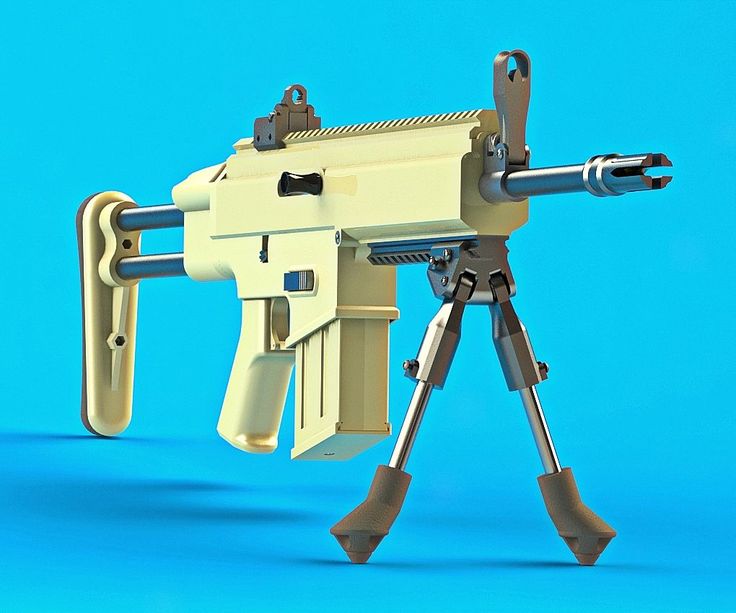 You can’t stop the signal.
You can’t stop the signal.
There are several key attributes for a 3D printer you’d want to use to print your own firearms, receivers or any other component that may withstand abuse.
First, consider the build area. The larger the receiver or other part you intend to make, the larger the build area of the 3D printer needs to be. Smaller areas are fine for handgun frames, but larger objects—such as stocks, rifle receivers and so on—will require a larger build area.
Extruder and bed temperature ratings are also important to consider, as these determine what materials you can use. Not all plastics are equal (Kydex is great for holsters but gun companies mold frames with nylon) so you’ll want to carefully consider what feed material you’ll be using before buying.
PLA is a common material, and so is ABS (an acrylic plastic with similar hardness properties to nylon) both of which are fine for making receivers.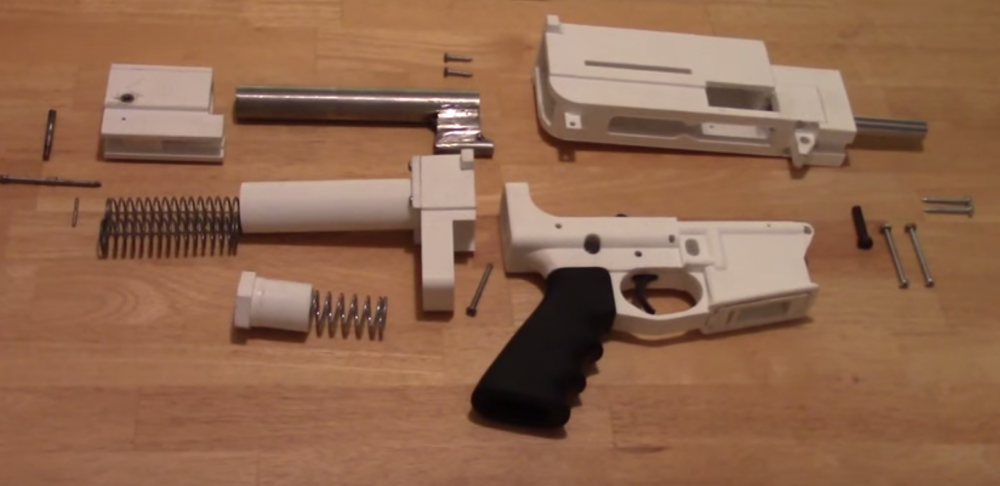
Also look at what filament types a specific printer can use.
Different colors of plastic filament used for 3D printing. Photo: Wikipedia.The printer bed is also important. Glass beds can produce ringing (a ripple or pebbling-like texture) on 3D prints, so make sure to look at that as well. Ringing is a cosmetic defect, rather than structural, but it’s good to know about.
The interface is also important. Having an onboard screen is a great feature, but it’s also important to be able to easily adjust settings if needs be. You also need to be aware of what kind of print files the printer is compatible with.
If looking at buying your own 3D printer, the final consideration is whether the printer is made to run quietly. It’s one thing to have a noisy machine if you live alone, but if you have roommates or a family that’s another story!
3 Awesome 3D Printers For 3D Printed GunsCreality Ender-3 V2The Ender 3 V2 is a very solid entry-level printer and one of the go-to recommended models for those looking to print firearms. It has an open build area, but the build area itself is small. It only uses PLA filaments, but that isn’t an issue for pistol frames or similar components.
It has an open build area, but the build area itself is small. It only uses PLA filaments, but that isn’t an issue for pistol frames or similar components.
The Ender 3 has a heated bed and uses Cura slicing software, so file compatibility isn’t a huge issue. Its operation is relatively quiet (<50dB) and efficient (reaches temperature within five minutes), and is operated using a rotary knob-controlled LCD screen.
MSRP: $279 // creality.com
Artillery Sidewinder X1 V4This is one of the most common 3D printers used for making guns. It’s feature-rich and has a mid-range price point.
The Sidewinder has a heated glass floor plate, with automatic leveling and dual z-axis synchronization. These features all help ensure a clean finished product. It has an open build area with generous volume at 300mmX300mmX400mm, and it can work with multiple filament types including PLA, ABS and more.
It has a touchscreen interface for easy operation and is relatively quiet (<40dB) to boot.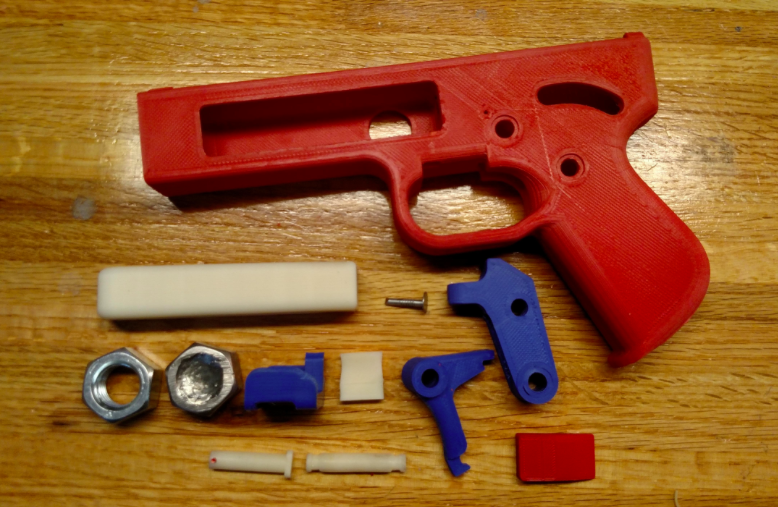
The Sidewinder is compatible with many—but not all— file types, but remains a viable 3D printer for building firearms.
MSRP: $419 // artillery3d.com
Prusa i3 MK3S+The i3 MK3S is more expensive, but it brings a lot of functionality to the table. Besides its open-source software that’s easily modified (better for designing your own prints or using multiple file types), the extruder can work with a lot of different materials including PLA, ABS, nylon, carbon fiber, polypropylene and even wood-based materials.
The build area may be on the small side, but the Prusa is designed for a lot more function than most other desktop printers, making it popular for industrial rapid prototyping (professional use) as well as with serious hobbyists. This printer is better suited for those interested in getting experimental with their prints rather than those who merely want to build established designs.
MSRP: $1,099 // prusa3d. com
com
The best starting place to find 3D printed gun files is Github. A number of different printable firearms as well as firearms accessories are available there. Another source is Thingiverse, but you’ll have to do some hunting to separate the toys from the real deal.
Models of the Charon line of 3D printed AR-15 lowers. Photo: Wikipedia.You could also download the Branwolfe1 Megapack which has dozens and dozens of prints on it in one location. And, of course, you can also browse the FOSSCAD subreddit and start down the Reddit rabbit hole which has a very active 3D printed firearm community.
Building 3D printed guns isn’t for everybody, but it is the next frontier in firearms innovation. It provides home engineers with the necessary tools for designing and creating their own firearms, improving upon existing designs and helping to ensure that gun rights remain accessible to all.
More DIY Stuff:
- How To Build A Zip Gun
- DIY Guns: RECOIL Magazine’s Guide To Homebuilt Suppressors, 80 Percent Lowers, Rifle Mods And More
- Building A 1911
- Blue-Collar AR DMR Build
- Building A Portable Precision Rifle
NEXT STEP: Download Your
Free Storm Tactical Printable Target Pack62 Printable MOA Targets with DOT Drills - Rifle Range in YARDS This impressive target pack from our friends at Storm Tactical contains 62 printable targets for rifle and handgun range use.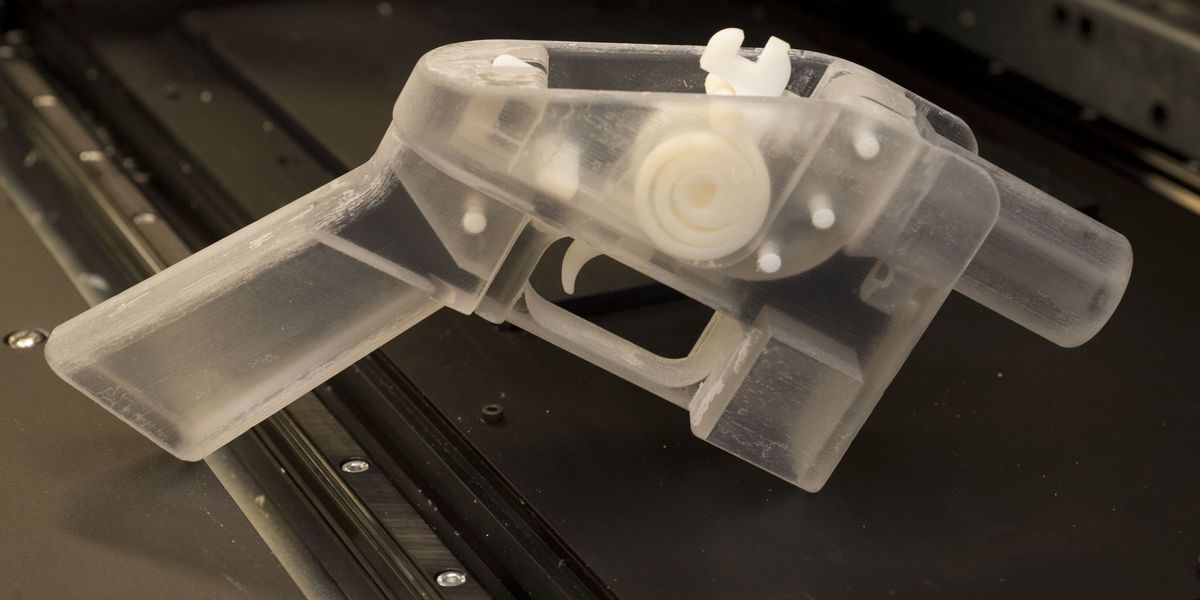 Target grids and bullseye sizes are in MOA. Ideal for long-range shooting!
Target grids and bullseye sizes are in MOA. Ideal for long-range shooting!
Subscribe to the Gun Digest email newsletter and we'll send your print-at-home target pack right away. Just enter your email address below.
is it possible to print pneumatic and firearms
Is it possible to make a gun on a 3D printer and is it legal?
Today's 3D printers offer enormous possibilities. They can print products of almost any complexity. Until quite recently, it was difficult to even imagine that a plastic weapon could shoot. However, it is already possible to make a pistol on a 3D printer, which, although not reliable, still fires live ammunition.
Can firearms be 3D printed?
Back in 2013, a young American gun fighter proved that plastic guns could be 3D printed. He was the first in the world to make a pistol in this way, in which only the striker was made separately from metal. All other parts were printed on an FDM printer.
All other parts were printed on an FDM printer.
Today's 3D printers are capable of printing any CAD model, and these models of firearms have been available for over 10 years. If in previous years their printing required professional skills, now almost any user can master them. With a 3D printer and a finished model, it became quite possible to print a gun. Another thing is that such "creativity" is punishable by the laws of most countries.
The evolution of 3D printed weapons
Despite all the prohibitions and restrictions, the evolution of 3D printed firearms is moving at a great speed. The beginning was laid by the single-shot plastic pistol Liberator by American K. Wilson, which appeared in 2013. It had a simple design and was chambered for 380 ACP. Already after 10-12 shots, this weapon became unusable. However, the very possibility of printing firearms served as an impetus for the development of the idea. The author of the first pistol himself founded the Defense Distributed company, which began to actively improve the technology.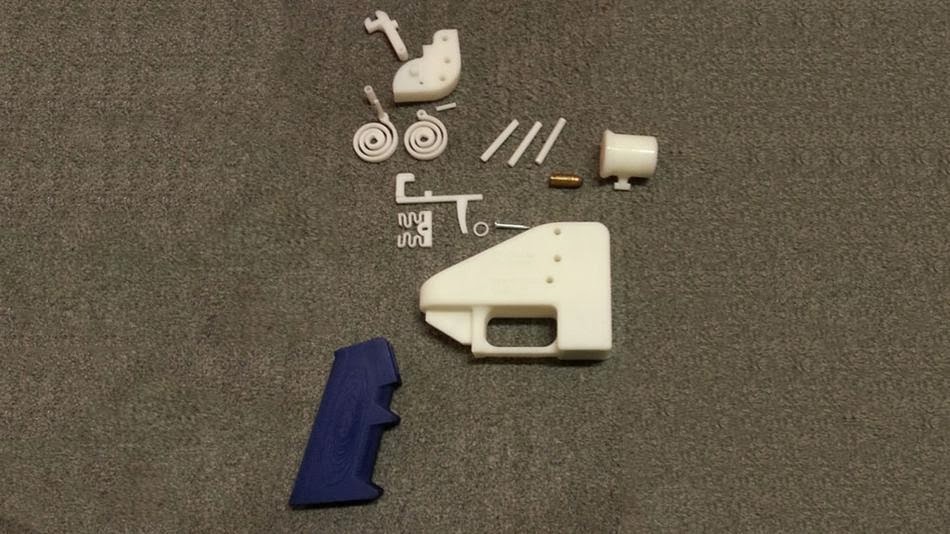
One of the ways to increase the durability of weapons was to increase the number of their barrels. At the beginning of 2014, the Japanese Y. Imura makes a 38 caliber Zig Zag pistol. He was able to fire up to 6 shots non-stop. The author of the weapon was recognized as a criminal and convicted.
The next step was the production of a six-shot revolver by J. Patrick in 2015. The PM522 Washbear has been shown in action on YouTube. The weapon was noticeably safer for the shooter compared to previous versions, but still allowed to fire only a few dozen rounds.
The first semi-automatic pistol for a 9 mm bullet appeared in 2016 under the name Shuty-MP1. It was developed by a handicraft gunsmith who hid under the pseudonym Derwood. It wasn't exactly a plastic weapon. The author used some metal parts from factory pistols - a barrel, a firing pin, a bolt and several springs. This made it possible to ensure a rate of fire of more than 46 rounds / min. However, when changing the store, the plastic case had to be cooled. In 2017, the same master proposed an improved model - Shuty AP-9.
In 2017, the same master proposed an improved model - Shuty AP-9.
The main contribution to the development of 3D printed weapons technology was made by Defense Distributed, which united a group of like-minded activists. First, these enthusiasts won legal proceedings in the United States and obtained permission to 3D-print weapons, which greatly expanded their capabilities. Secondly, they were able to set up a professional business with product testing and quality control. As a result, in 2018–19 they developed numerous models of a variety of firearms - from pistols to carbines. They posted over 30 files for printing original gun parts. Most of them were plastic, and the metal parts were not made from purchased, ready-made elements, but from simple metal profiles (tubes, strips, etc.), which are sold in ordinary hardware stores. This made it possible to exclude the use of parts patented by gunsmiths.
At the moment, the semi-automatic carbine FGC-9, developed on the basis of the Shuty AP-9, has become the pinnacle of "creativity" of Defense Distributed.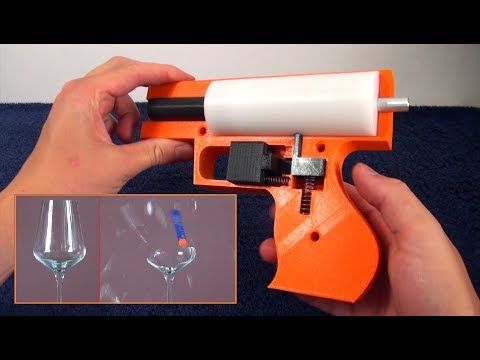 At the same time, there is not a single factory part in it. The barrel for the 9 mm cartridge is made of steel pipe using electrochemical processing.
At the same time, there is not a single factory part in it. The barrel for the 9 mm cartridge is made of steel pipe using electrochemical processing.
Where can I get drawings and what should I look for?
Gun manufacturing bans make it much harder to get blueprints and models of guns for 3D printing. The right to free placement of information was achieved only by Defense Distributed. Their website provides free access to drawings, models and technologies. Other information can be found on the Internet, but they are usually illegal.
When choosing a model, pay attention to the following information:
- material used;
- cartridge for which the model is designed;
- number of cartridges in the magazine, rate of fire;
- operating time before failure.
It is important to clarify which metal parts will need to be purchased separately, in addition to plastic for printing on a printer.
What does the law say in different countries?
The only country where firearms can be 3D printed is the United States.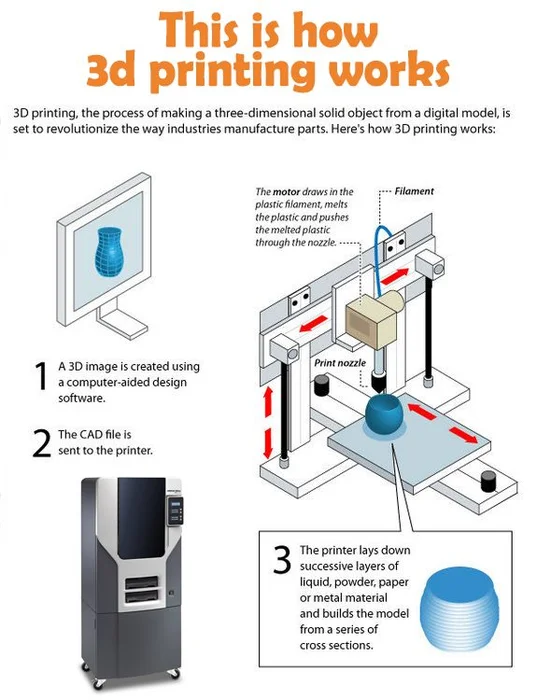 Gun Control Act 19 applies here68, giving Americans the right to make weapons, but only for personal use. Only one limitation is put forward: it must be determined by metal detectors, that is, it must have a metal element. In virtually all other countries, homemade manufacture and repair of weapons for any purpose is prohibited by law. In Russia, printing it on a 3D printer falls under the Criminal Code of the Russian Federation and is punishable by imprisonment.
Gun Control Act 19 applies here68, giving Americans the right to make weapons, but only for personal use. Only one limitation is put forward: it must be determined by metal detectors, that is, it must have a metal element. In virtually all other countries, homemade manufacture and repair of weapons for any purpose is prohibited by law. In Russia, printing it on a 3D printer falls under the Criminal Code of the Russian Federation and is punishable by imprisonment.
Should we be afraid of plastic weapons?
The question of how dangerous a weapon printed on a printer is becoming increasingly important. Despite all the prohibitions, it is extremely difficult to control the spread of technology around the world. The availability of 3D printers and the increase in their functionality make it possible to master the production of plastic guns at home. How dangerous is such a weapon?
Most experts agree that currently printed weapons are more of an interesting toy. It is quite expensive and is designed to carry out only a few dozen shots. Moreover, such pistols are quite dangerous for the shooter himself with live ammunition, because they can explode in their hands.
Moreover, such pistols are quite dangerous for the shooter himself with live ammunition, because they can explode in their hands.
However, the danger cannot be underestimated. It is easier and cheaper for a "serious" criminal to buy illegal military weapons than to make them on a printer. At the same time, there may be "enthusiasts" who, for their own interest, can make a pistol and try it out in action. Such inadequate people represent an undoubted danger. In addition, the temptation is great for terrorists. Metal detectors do not detect a plastic gun, which means that it is easier to carry it, for example, on an airplane.
Important! Plastic weapons have a very small resource. At the same time, sometimes just one shot is enough to kill a person.
3D printed firearms have the following advantages:
- the ability to make military weapons at home;
- light weight;
- availability of materials;
- Ability to copy famous weapon models.
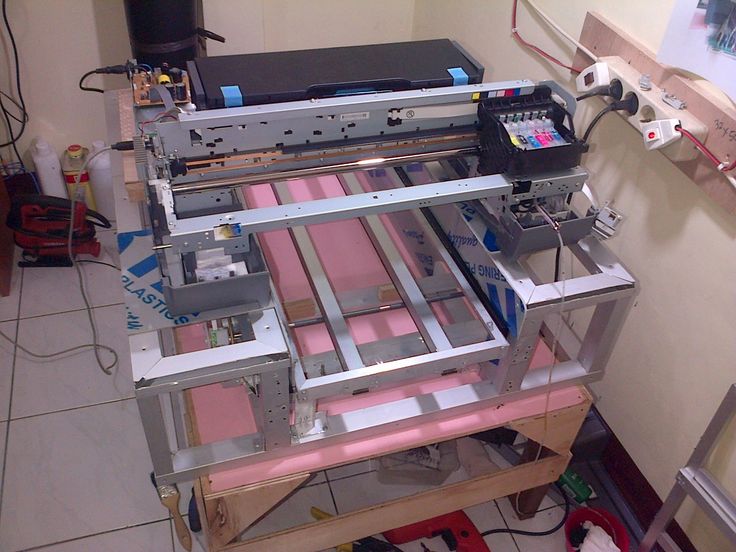
Always remember that there are significant disadvantages:
- illegal production;
- high cost of weapons;
- very small resource and limited rate of fire;
- danger to the shooter himself.
Currently, plastic weapons have more disadvantages than advantages, and most importantly, you can get a real prison term for making them.
Prospects for printing weapons
The potential for 3D printing of firearms is far from exhausted. The expansion of equipment capabilities and the development of innovative materials indicate that in the near future such weapons may approach military weapons in terms of characteristics. In the future - a significant increase in the resource and the provision of automatic firing.
Significantly increases the reliability of printed pistols and carbines SLS technology using metal powder. Such weapons already differ little from the factory metal models. While it is very expensive, which significantly limits the application.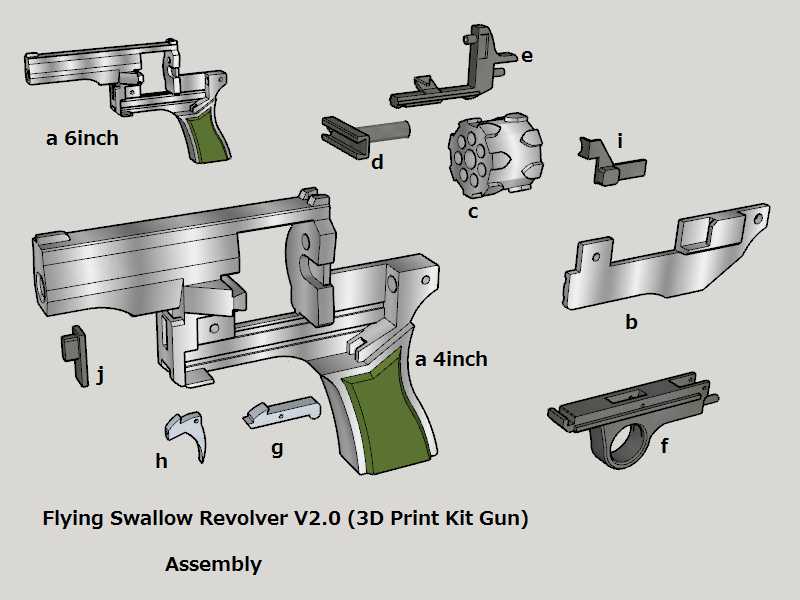 However, over time, the material will become cheaper, which means it will become more affordable.
However, over time, the material will become cheaper, which means it will become more affordable.
Printing firearms on a 3D printer has become a reality. Despite its extremely low performance and reliability, interest is growing in it. Experts predict that the printing of weapons will become widespread, and it is impossible to stop such production. There comes a time when measures should be taken at the legislative level to establish effective control over this process.
- March 21, 2021
- 4639
Get expert advice
3D printer guns are back and unstoppable They anonymously share drawings, tips, and create their own community. And there is no easy way to stop them.
In the United States, a network of supporters of printing weapons on a 3D printer is growing again - but now everything is different.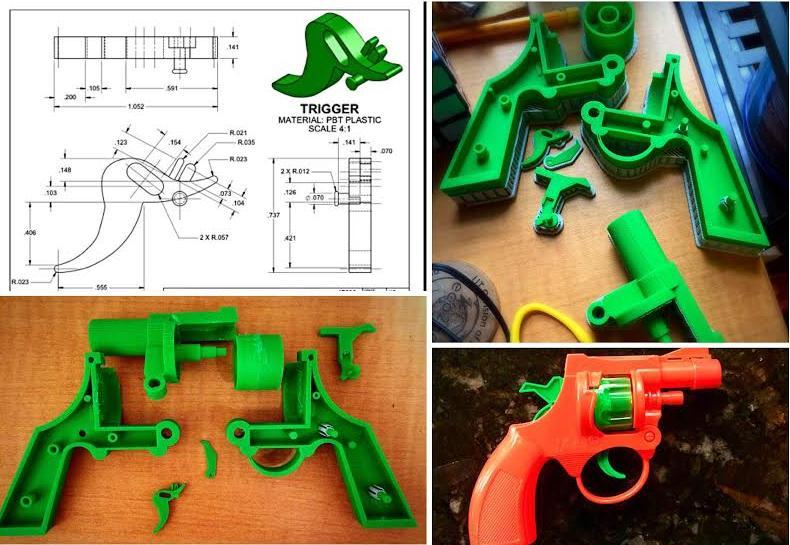 Unlike previous attempts to popularize weapons that can be printed on a 3D printer, this operation is completely decentralized. It has no headquarters, no trademarks and no leader. And the people behind it believe that this state of affairs guarantees the inability of governments to stop them.
Unlike previous attempts to popularize weapons that can be printed on a 3D printer, this operation is completely decentralized. It has no headquarters, no trademarks and no leader. And the people behind it believe that this state of affairs guarantees the inability of governments to stop them.
"If they want to come after me, they'll have to find me first," says Ivan the Troll, a member of the group. “I am one of many like-minded people doing this work.”
The troll Ivan is known only by his network pseudonym, and is the de facto representative of an underground organization of gunsmiths working on 3D printers. Ivan says he knows at least 100 people actively developing weapon 3D printing technology, and claims that thousands of people are involved in the network. And this loosely connected network spans the entire world.
They communicate on various digital platforms - Signal, Twitter, IRC and Discord. They critique each other's work, trade weapon CAD files, give advice, talk theory, and collaborate on new blueprints.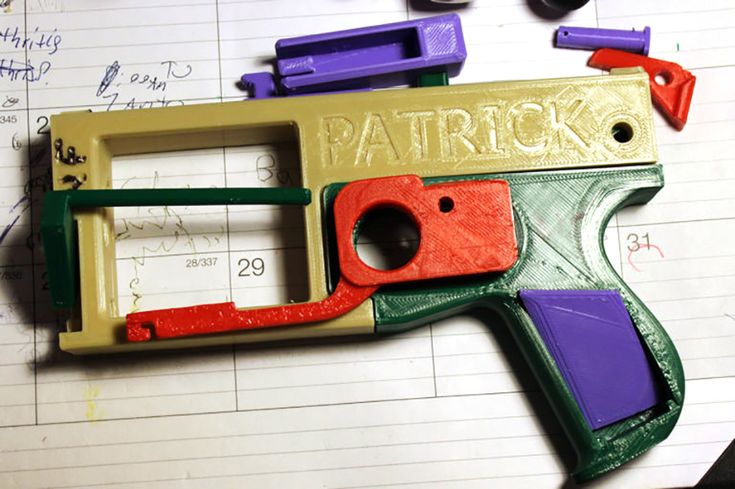 Enthusiasts of printed guns - who share similar ideas and political views on gun control - mostly meet on subreddits and forums dedicated to this topic.
Enthusiasts of printed guns - who share similar ideas and political views on gun control - mostly meet on subreddits and forums dedicated to this topic.
Ivan himself is only a small part of this network. He says he comes from Illinois and is about the age of a "college student," but otherwise keeps quiet about himself to keep his head down. In doing so, he launched some amazing commercials showing new handgun parts he printed out in his garage, including the Glock 17 pistol frame.0003
On the last video [ , the video is deleted from YouTube, but the videos can be found on other hostings / approx. transl. ] shows the Glock 17 resin frame in various stages of production in the workshop. The footage is sounded with fast synthwave music, and passed through a VHS filter for greater aesthetics. By the end of the video, Ivan fires several shots from a ready-made pistol, and the captions that appear at the same time read: "Anyone can do this", "Live free or die", "Let's try to stop this, you dirty etatists.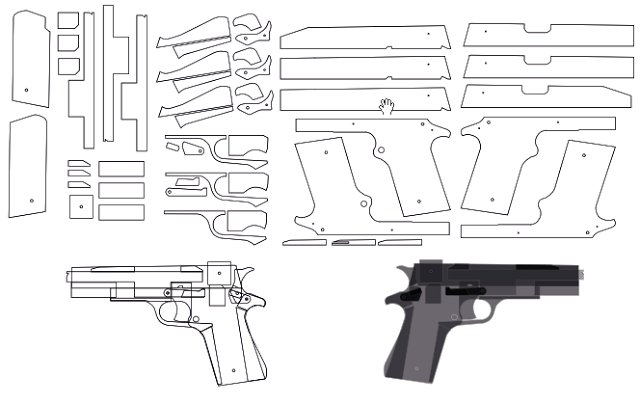 " He also uploaded a complete CAD model of the AR-15 assault rifle to a file sharing site. It is clear that Ivan is trying to provoke his detractors to the maximum.
" He also uploaded a complete CAD model of the AR-15 assault rifle to a file sharing site. It is clear that Ivan is trying to provoke his detractors to the maximum.
In February of this year, Ivan and his group decided to call themselves "Distributed Deterrence" transl. ], which is an allusion to the name of the company Defense Distributed [distributed protection], which was previously headed by Texas crypto-anarchist Cody Wilson.
In September 2018, Wilson, aged 30, was arrested and charged with sexually abusing a minor. He allegedly paid $500 for sex with a 16-year-old girl in his hometown of Austin, Texas. Naturally, this arrest took Wilson completely out of the world of 3D printed guns. Many of the people who admired him were either disgusted or realized that his time had passed. He retired from Defense Distributed, which used to be the main driver behind 3D weapon printing, since its inception in 2012. Wilson was released on $150,000 bail, but hasn't been in touch since.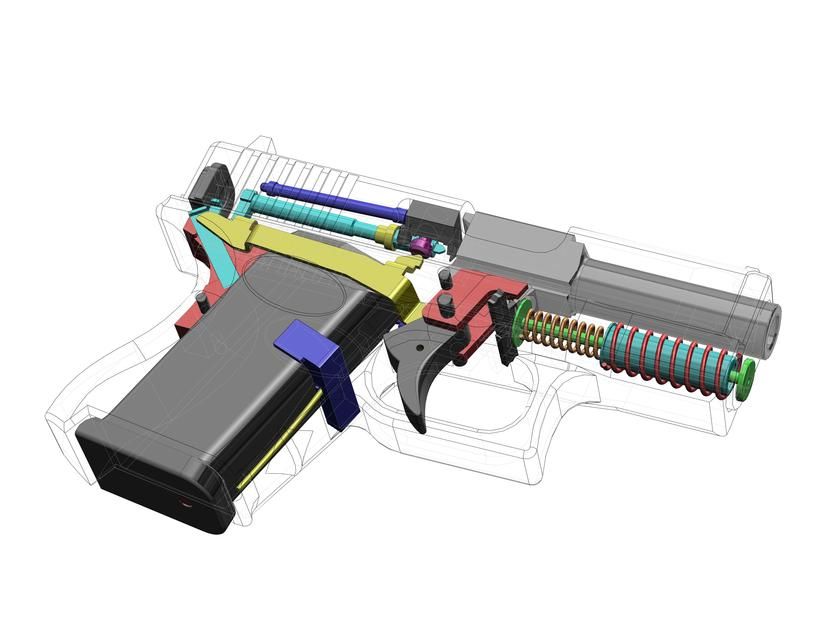
Defense Distributed has many other legal issues. Attorneys in more than 20 US states are currently suing the company - which has filed counterclaims - in an attempt to undo the company's win in court that allowed the company to upload and share 3D weapon blueprints online. All these processes are long and tedious (New York State just passed a law to ban 3D printed weapons).
But for Ivan's group, Deterrence Dispensed, none of that matters. They upload their files singly to services like Spee.ch, a media hosting site powered by the LBRY blockchain, without waiting for anyone's permission. They themselves make blueprints for printing weapons, tweak old ones, and distribute all blueprints from Defense Distributed for free.
“Even if no government forbade me to do this, I think I would still do it,” says Ivan. “Some people enjoy video games, but I like to spend time drawing things in CAD.”
But Ivan doesn't just "draw things" in CAD. He's giving away files for free to help anyone with a decent Fused Deposition Modeling (FDM) 3D printer and certain tools build a working gun. Once the CAD file is downloaded, it is opened in a slicing program that translates the CAD files into instructions that the 3D printer can understand. After the parts are ready, they can be assembled, getting a fully working weapon.
Once the CAD file is downloaded, it is opened in a slicing program that translates the CAD files into instructions that the 3D printer can understand. After the parts are ready, they can be assembled, getting a fully working weapon.
The blueprints that Deterrence Dispensed shares with the world are so good, according to Ivan, that they are not just "working", they are of excellent quality. “Our AR15 model is the best available to the public without a doubt,” says Ivan.
Despite active antagonism with the authorities, Ivan has had no problems with them so far. His Twitter account was permanently shut down by Senator Bob Menendez of New Jersey, but so far, from the point of view of law enforcement and government, all has been quiet.
Ivan considers himself and other radical gun printing groups like FOSSCAD to be hobbyists who want to do something “wrong”. He believes that the problems of 3D printing weapons are overblown. He points out that while printable gun parts can be used to kill people, homemade guns have always existed and are probably more lethal. From his point of view, all this hysteria and backlash is directed to the wrong address.
From his point of view, all this hysteria and backlash is directed to the wrong address.
"Trust me as a gun maker. A semi-automatic shotgun is 100 times easier, faster and cheaper to make than a regular pistol. I can go to Home Depot and buy a shotgun for $8."
In 2019, 156 people have already died in mass shootings in the United States, and in principle, the number of deaths related to weapons is a 20-year high. In March, a terrorist armed with two semi-automatic rifles and two shotguns killed 51 Muslims in Christchurch, New Zealand. Does the US (and the rest of the world) need more weapons in these circumstances, homemade, printed or otherwise? Ivan thinks so.
“The police killed more people last year than were killed in all the mass shootings in the last 10 years,” he says. “We in America live in a society where there is always the risk that a cop will shoot your ass off for nothing. And you don't even have to pose a threat to him. A cop can kill you just because he wants to, and he can get away with it.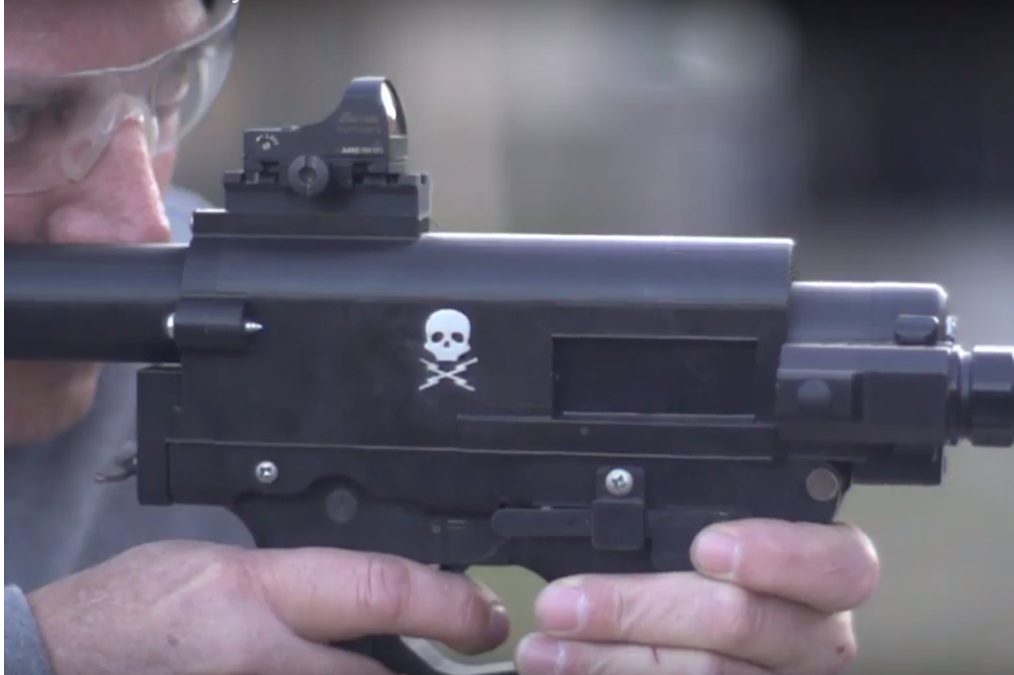 "
"
He cited numerous examples of policemen shooting at unarmed black Americans, especially Steven Clarke. Clark, 22, was shot and killed by police in his garden with only his cell phone in hand. “I think it’s extremely important that everyone has the opportunity to have a gun,” Ivan continued. “Everyone should have the same legal options as the cops using them to control you.”
However, the facts are undeniable. Slightly more than half of deaths from firearms occur in six countries, incl. in the USA. And analysis from Harvard University shows that the more guns there are, the more murders there are.
Opponents of weapons, of course, are not satisfied with the concept of a downloadable pistol. Avery Gardiner, one of the presidents of the Brady Campaign, said that 3D-printed weapons "pose the greatest threat to our security." Following the court ruling in August, Gardiner said, "There is already a wave of dangerous individuals trying to illegally post blueprints on the Internet.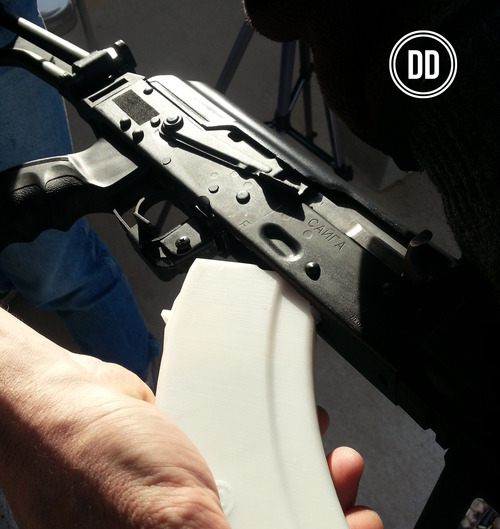 "
"
Members of this decentralized 3D printed weapon society are often motivated by a mixture of libertarian views and the pleasure of designing and creating tangible items as a hobby. They upload drawings to the Internet, share them, improve diagrams and make it easier to print, while remaining out of sight. Ivan states that he does this for the love of freedom and radical adherence to the first two amendments to the US Constitution: freedom of speech and freedom to bear arms.
However, his radicalism goes as far as to talk about the right to have his own Tomahawk-class missiles, saying that they would be safer in his hands than in the hands of the US Army and its allies - given the history of accidental killing of civilians by the military, including a wedding in Afghanistan and a school bus in Yemen.
Describing the ever-increasing list of civilians who died at the hands of the US military in foreign wars, Ivan often comes off as more of a radical leftist than the right-wing gun fanatic that many think he is.